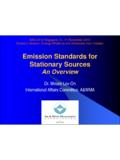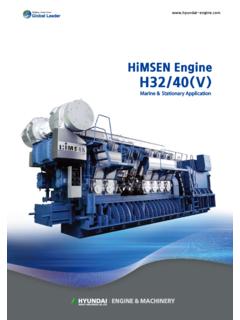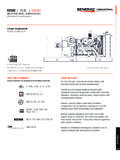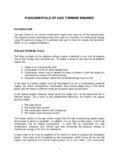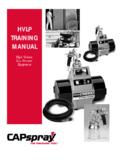Transcription of Scroll compressors for air-conditioning
1 Scroll compressors for air-conditioning ZR 18 K4*.. ZR 81 KC*. Application Guidelines Contents 1 Introduction 20 Single-Phase Models 2 Nomenclature 21 Three-Phase Models 3 How a Scroll Works 22 Cable Connectors 4 Qualified Refrigerants 23 Compressor Functional Check 5 Lubrication 24 Excessive Liquid Floodback 6 Accumulators 25 Continuos Floodback 7 Crankcase heaters 26 Repeated Floodback 8 Pump Down 27 High Potential Testing 9 Reversing Valves 28 Installation 10 Discharge Temperature Protection 29 Service 11 Standard Motor Protection 30 New Installations 12 Mufflers 31 Field Service 13 Low Ambient Cut-Out 32 Shut-off Valves and Adaptors 14 Pressure Controls 33 Shell Temperature 15 Shut-Off 34 System Charging Procedure 16 Starting 35 Unbrazing System Components 17 Deep-Vacuum Operation 36 Suction Line Noise and Vibration 18 Brief
2 Power Interruptions 37 R 407C Characteristics 19 Electrical Installation 38 Application Envelopes 39 Application Diagram C060201/0702_1002/E 2. 1 Introduction The Compliant Scroll compressor has been under development at Copeland since 1979 and is the most efficient and durable compressor Copeland has ever developed for air conditioning, refrigeration and heat pump applications. It offers very low vibration and sound levels and is tolerant to stresses caused by liquid slugging, flooded starts, and debris commonly found in refrigeration systems. Availa- ble product range in this family is from 1,5 to 6 HP. For detailed information, please, refer to the Copeland Selection Software accessible from the Copeland website at or printed performance brochures. These guidelines are not meant to replace the system expertise available from system manufacturers.
3 2 Nomenclature The model numbers of Copeland Scroll compressors have been designed to include a coded nominal capacity at ARI A/C operating conditions in BTU/h at 60 Hz with R 22. For example, model ZR 28 K3 has a capacity of approximately 28000 BTU/h at 60 Hz, using K as multiplier 1000. Index 3 denotes the version of the Scroll set. The C in this position refers to a Scroll set with slightly higher built in compression ratio. If the letter E follows the index, the compressor is charged with Ester oil. Use factor for approximate capacity in Watt at 50 Hz. Model Designation ZR 28K 3 E -PFJ-522. 1 2 3 4 5 6 7. 1 - compressor family: Z = Scroll 2 - high/medium range 3 - nominal capacity [BTU/h] @ 60 Hz and ARI conditions (*see below) using multipliers "K" for 1000 and "M" for 10 000.
4 4 - model variation 5 - POE oil 6 - motor version 7 - bill of material number 522: brazing stub tubes (ZR 22 K*..ZR 81 K*). 523: Rotalock threaded stubs (ZR 48 K*..ZR 81 K*). *ARI-Conditions: 7,2 C evaporating temperature 54,4 C condensing temperature 11 K suction gas superheat 8,3 K liquid subcooling 35 C ambient temperature C060201/0702_1002/E 3. 3 How a Scroll Works 1 2 3. 4 5. : Scroll gas flow The Scroll is a simple compression concept first patented in 1905. A Scroll is an involute spiral which, when matched with a mating Scroll form, generates a series of crescent-shaped gas pockets between the two members (see Fig. 1). During compression , one Scroll remains stationary (fixed Scroll ) while the other form (orbiting Scroll ) is allowed to orbit (but not rotate) around the first form.
5 As this motion occurs, the pockets between the two forms are slowly pushed to the center of the two scrolls while si- multaneously being reduced in volume. When the pocket reaches the center of the Scroll form, the gas, which is now at a high pressure, is discharged out of a port located at the center. During com- pression, several pockets are being compressed simultaneously, resulting in a very smooth process. Both the suction process (outer portion of the Scroll members) and the discharge process (inner por- tion) are almost continuous. 1. compression in the Scroll is created by the interaction of an orbiting spiral and a stationary spiral. Gas enters the outer openings as one of the spirals orbits. 2. The open passages are sealed off as gas is drawn into the spirals. 3.
6 As the spiral continues to orbit, the gas is compressed into two increasingly smaller pockets. 4. By the time the gas arrives at the center port, discharge pressure has been reached. 5. Actually, during operation, all six gas passages are in various stages of compression at all times, resulting in almost continuous suction and discharge. 4 Qualified Refrigerants R 407C has been qualified as a replacement for R 22 for the compressor models ZR 18 K4E .. ZR81. KCE. R 134a is also qualified. The application envelopes of each refrigerant are shown in section 36. 5 Lubrication The compressor is supplied with an initial oil charge. The standard oil charge for the use of refrigerants R 407C and R134a is a polyolester (POE) lubricant Copeland 3 MAF (32 cSt). In the field the oil level could be topped up with ICI Emkarate RL 32 CF or Mobil EAL Arctic 22 CC, if 3 MAF is not available.
7 In R 22 applications White Oil is used. White Oil is compatible with Suniso 3GS, Tex- aco WF 32 and Fuchs KM. These oils may be used if an addition is required in the field. The recharge values can be taken from Copeland's brochure. Although there is no flexible mounting of the internal compressor parts, the number of start/stop cycles should be limited to 10 per hour. A high cycling rate will pump oil into the system and may lead to lubrication failure. Oil leaves the compressor at start-up C060201/0702_1002/E 4. Maximum Sump Temperature 93 C. 25. 20 Safe Zone 15. tb - te (K). 10. 5. 0 Fig. 2: -25 10. -20 -15 -10 -5 0 5. Minimum bottom shell temperature (tb). te ( C). regardless of the low oil carry over of the Scroll . The short running time is insufficient to return the oil to the compressor and possibly results in a lack of lubricant.
8 It must be considered that the entire system will be coated with oil to some extent. Oil viscosity changes with temperature. System gas velocity changes depending on temperature and load. In low load conditions gas velocity may not be high enough to return oil to the compressor. System piping should be designed to return oil under all operating conditions. For proper lubrication the minimum differential between bottom shell (tb) and evaporating (te) temper- atures should be carefully observed as laid out in On the other hand, the maximum bottom shell temperature should never exceed 93 C, measured close to the bottom center of the compressor. One disadvantage of POE is that it is far more hygroscopic than mineral oil ( ). Only brief expo- sure to ambient air is needed for POE to absorb sufficient moisture to make it unacceptable for use in a refrigeration system.
9 Since POE holds moisture more readily than mineral oil it is more difficult to remove it through the use of vacuum. compressors supplied by Copeland contain oil with a low moisture content, and this may rise during the system assembling process. Therefore it is recommended that a properly sized filter-drier is installed in all POE systems. This will maintain the moisture level in the oil to less than 50 ppm. If oil is charged into a system it is recommended to charge systems with POE containing no more than 50 ppm moisture content. If the moisture content of the oil in a refrigeration system reaches unacceptable high levels, corrosion and copper plating may occur. ppm 1500. POE. 1000. 500. mineral oil 50 100 150 200 250 300 h Fig. 3: Absorption of moisture in ester oil in comparison to mineral oil in [ppm] by weight at 25 C and 50% relative humidity.
10 H = hours. The system should be evacuated down to mbar or lower. If there is uncertainty, as to the moisture content in the system, an oil sample should be taken and tested for moisture. Sight glass/moisture in- dicators currently available can be used with the HFC refrigerants and lubricants; however, the mois- ture indicator will just show the moisture contents of the refrigerant. The actual moisture level of POE. C060201/0702_1002/E 5. would be higher than the sight glass specifies. This is a result of the high hygroscopicity of the POE. oil. Oil samples would have to be taken from the system and analyzed to determine the actual moisture content of the lubricant. 6 Accumulators Durability is ensured by the Compliant Scroll 's inherent abili- ty to handle liquid refrigerant in flooded start and defrost cy- cle operation, and an accumulator is normally not required.

